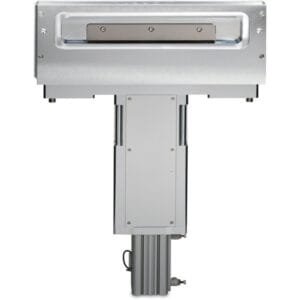Conflat (CF) UHV 5-Way Standard Crosses
Conflat (CF) UHV 5-Way Standard Crosses from TFM are designed to provide versatile and reliable solutions for ultra-high vacuum (UHV) systems. These crosses feature five ports, allowing for multiple connections within a compact, efficient design. The high-quality ConFlat (CF) flanges ensure secure, leak-tight sealing, making them ideal for demanding applications in research, semiconductor processes, and material science.
Key Features
Five-Port Configuration for Flexibility
The 5-way configuration of these crosses offers flexibility in connecting multiple components in one compact unit. This design is particularly beneficial in applications where space is limited but multiple ports are required for connecting various vacuum system components.ConFlat (CF) Flange for Leak-Tight Sealing
The CF flanges used in these crosses provide a metal-to-metal seal that is both durable and highly effective in preventing leaks. This seal ensures that the vacuum integrity is maintained even in extreme conditions, crucial for UHV environments.Ultra-High Vacuum Compatibility
Designed for use in UHV systems, the Conflat (CF) UHV 5-Way Standard Crosses provide reliable performance even in the vacuum range of 10⁻¹¹ Torr. These components maintain the high vacuum quality required in advanced research and industrial applications.Durable Construction
Made from corrosion-resistant materials such as stainless steel, these crosses are built to withstand the harsh conditions of UHV applications, offering long-term reliability and performance.Precision Engineering
TFM’s Conflat 5-way crosses are manufactured to precise specifications, ensuring compatibility with other vacuum components. This ensures smooth integration into complex UHV setups.
Applications
Research and Scientific Exploration
Perfect for use in experimental chambers, surface analysis, and particle accelerators, these 5-way crosses allow for complex UHV setups in scientific and industrial research.Semiconductor Manufacturing
These crosses are commonly used in semiconductor processing, providing the vacuum conditions needed for operations such as thin-film deposition, etching, and ion implantation.Material Science and Nanotechnology
Ideal for use in studies of materials at the atomic and molecular levels, these crosses maintain the stringent vacuum requirements necessary for cutting-edge material science research.Advanced Vacuum Systems
Used in vacuum systems for analytical instruments, these crosses ensure consistent and reliable UHV conditions, which are critical for accurate measurements and data collection.
Technical Specifications
Material Options: Stainless steel, Inconel, or other compatible materials
Flange Type: ConFlat (CF)
Vacuum Rating: Ultra-high vacuum capabilities down to 10⁻¹¹ Torr
Port Configuration: 5-way standard cross
Temperature Range: Designed to operate effectively across a broad temperature range
Sizes and Custom Options: Available in various sizes, with custom configurations upon request
Benefits of Conflat (CF) UHV 5-Way Standard Crosses
Leak-Tight Seal: The ConFlat flange design ensures a robust, metal-to-metal seal for the highest level of vacuum integrity, crucial for UHV environments.
Space-Efficient Design: The 5-port design allows for multiple connections without occupying excessive space, making it ideal for compact UHV setups.
Durable and Long-Lasting: Constructed from high-quality materials, these crosses offer durability and long-term performance in even the harshest UHV conditions.
High-Precision Manufacturing: With precise tolerances and high-quality construction, TFM’s 5-way standard crosses provide consistent and reliable performance.
Why Choose TFM?
TFM’s Conflat (CF) UHV 5-Way Standard Crosses are designed for researchers and engineers seeking dependable, high-performance components for complex UHV systems. Their durable, leak-tight construction and flexible configuration make them an excellent choice for a wide range of applications, from scientific research to semiconductor production. With TFM, you can trust in precision, quality, and long-lasting performance for all your ultra-high vacuum needs.





Reviews
There are no reviews yet.